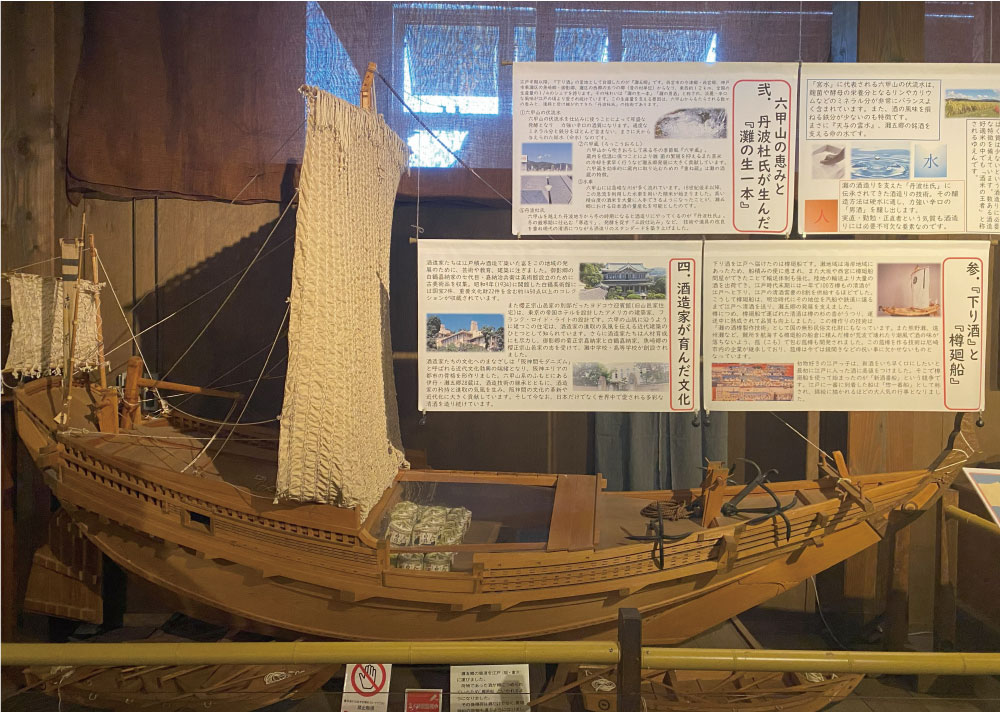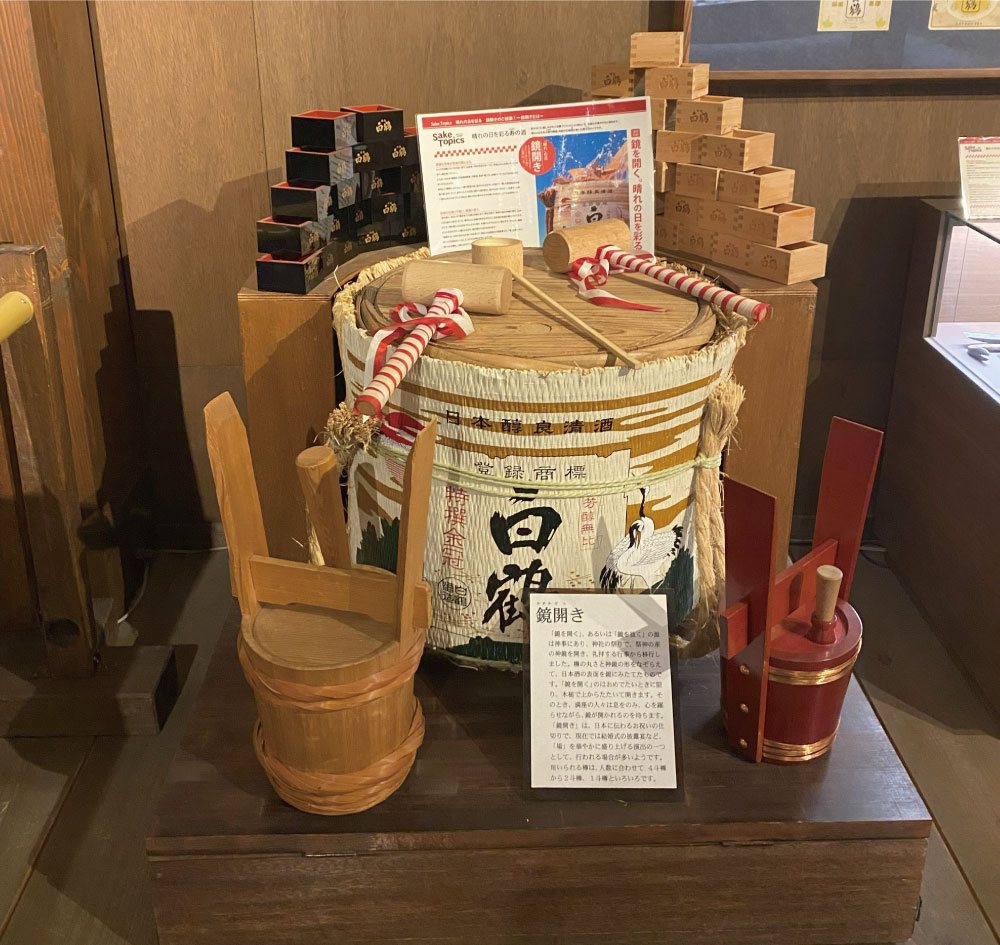Komodaru (sake barrels)
Before the development of glass bottles, sake was sold by the barrel.
Even now, barreled sake is used at wedding parties or other celebratory occasions.
At Hakutsuru, today too there are staff charged with wrapping barrels in straw matting one-by-one by hand, as shown in the diorama.
Tools on Display
Taru-kaisen (Barrel Cargo Ship)

Transported choice sake from the Nada-Gogo (Five Villages of Nada) to Edo (present-day Tokyo).
It came to be called a barrel ship because the sake that was its cargo was packed in barrels.
After that, it came to carry not only sake, but also the cargo of larger junk vessels called higaki-kaisen.
It was in service since around 1670.
Kudari-zake and Taru-kaisen

Taru-kaisen (barrel cargo ships) were what delivered kudari-zake (sake produced in the Kyoto area) to Edo. Because the Nada region was located on the coast, it was blessed with convenient shipping, and the transportation system was also strengthened with the opening of taru-kaisen wholesalers in Osaka and Nishinomiya. Larger volumes of sake could be shipped than over land, and during the end of the Edo period, one million barrels of sake were sent to Edo every year. This was enough to supply 80% of Edo's sake demand. This way, taru-kaisen continued to deliver sake to Edo, supporting the development of the Nada-Gogo (Five Villages of Nada), until they were eventually replaced by steamships and railways in the Meiji period.The sake, packed in barrels and transported by taru-kaisen, had its quality improved by the cedar aroma from the barrels as well as aging during transportation. Nada's technology of producing these sake barrels has also been designated as a National Intangible Folk Cultural Property. In addition, in order to prevent the barrels, loaded in the hold of taru-kaisen sailing through difficult areas like the Kumano Sea and Enshu Sea, from breaking on rough waters, as well as the taste of the sake from deteriorating in the sea breeze, komo barrels, wrapped in woven straw mats (komo) were also developed.The technique of making these komo barrels has been passed down by companies in Amagasaki City, and the barrels are now an essential part of celebrations such as kagami-biraki, the traditional breaking of sake casks on special occasions.
Note: Kudari-zake and Taru-kaisen
Because the people of Edo, who loved new things, wanted to try new sake as soon as possible, the first sake to enter Edo was highly priced. Then, a competition known as Shinshu-ban-fune began using taru-kaisen to race. The first ship to arrive at Edo was called the soichiban-bune, and the event became so popular that it was depicted in color woodblock prints.
Kagami-biraki ("Mirror Opening")

The origin of "opening the mirror" or "pulling out the mirror" lies in Shinto ritual, and has shifted from the worship practice of opening up the sacred mirror at the throne of an enshrined deity during a shrine festival. The surface of a sake cask is likened to this, from the roundness of the barrel and the shape of the divine mirror. "Opening the mirror," or kagami-biraki, is done by striking it from above with a wooden mallet. This is only done on auspicious occasions. At the time, everyone gathered holds their breath in excitement and waits for the "mirror" to be opened. Kami-biraki is a celebratory custom that has been handed down in Japan. Nowadays, it seems to often be performed at wedding receptions and similar events as way to liven up the atmosphere. Depending on the number of people present, barrels used may vary from 4- to 2- or even 1-to in volume.
